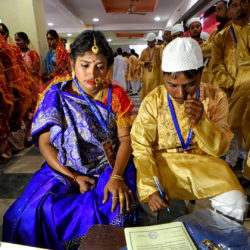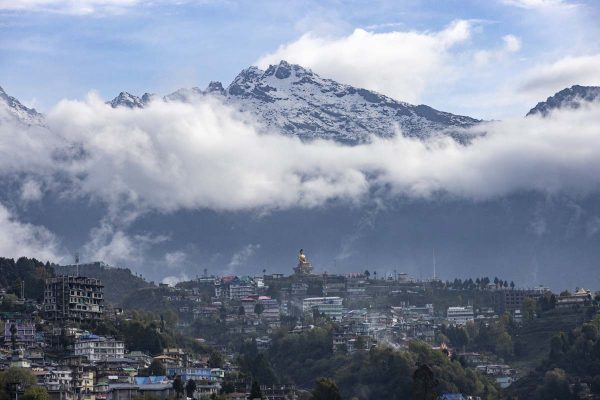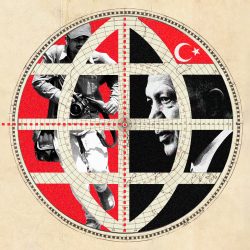
Teona Tsintsadze/Getty images
Fake videos of mob violence deepen India’s North-South divide
A social media storm has been brewing in India for much of March over videos of migrant laborers from the state of Bihar supposedly being bullied and even murdered in the state of Tamil Nadu.
The videos were fake, said the Tamil Nadu police. A controversy had been manufactured, said the Tamil Nadu government, by politicians from India’s governing Bharatiya Janata Party. “The spread of fake videos,” said the state’s chief minister, M.K. Stalin, on March 10, “was initiated by BJP leaders from North India.” He accused these unnamed leaders of having an “ulterior motive,” of trying to create unrest just after he had “spoken about anti-BJP parties uniting.”
With the BJP, led by Indian Prime Minister Narendra Modi, firm favorites to win a third consecutive national election in 2024, most analysts deem the formation of an ad hoc alliance of regional parties and the fast-fading Congress — which has governed India for the vast majority of its 75 years as an independent nation — as the opposition’s only hope.
If Modi remains by far India’s most popular politician, there is little love lost for him in Tamil Nadu. For years, whenever he visited the state, he would be greeted with signs that read, “Go back Modi.” But the BJP, which has never had an electoral presence at any level in Tamil Nadu, surprised observers last year by winning several seats in municipal elections in the state. It led the party’s state chief to declare his intent to turn the BJP into a third political force in a state that has been dominated by two parties since the 1960s, both of which emerged from an equal rights movement for oppressed castes. Despite the progress made last year, the BJP is currently in disarray in Tamil Nadu, with 13 party workers quitting dramatically just last week.
Meanwhile, Bihar is currently led by an anti-BJP coalition. In August 2022, the state’s chief minister walked out on an alliance with the BJP and formed a new government with other partners including the Congress. The fake videos of Bihari laborers being attacked in Tamil Nadu were spread by BJP supporters, politicians from both states said, to drive a wedge between parties in both states that were opposed to the BJP.
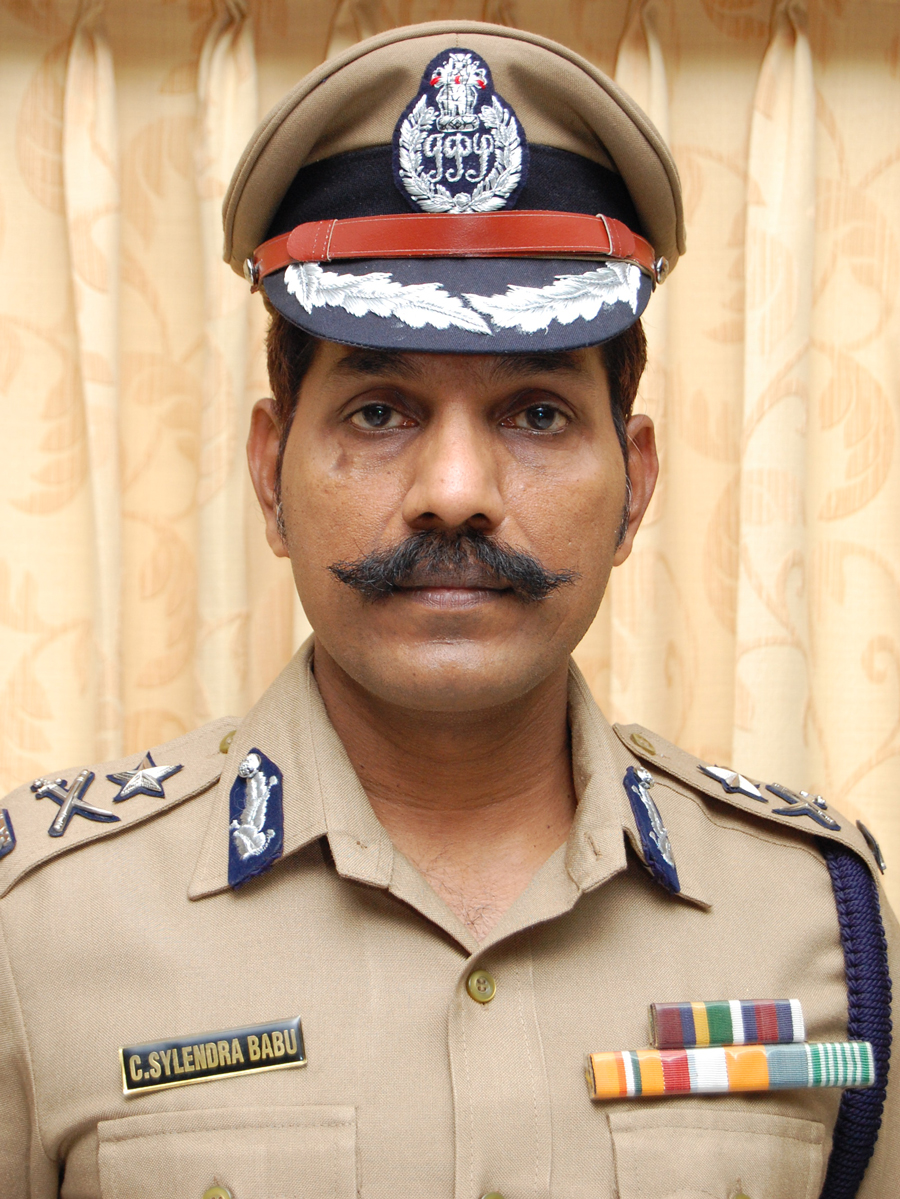
Photo: Creative Commons/Diwan07.
Sylendra Babu, the extravagantly mustached head of the Tamil Nadu police, told me that he had to form 46 special teams to coordinate with the Bihar police to combat the viral spread of videos and social media commentary about attacks on Bihari laborers. “It was a war-like situation,” Babu said.
Arrayed against the police in both Tamil Nadu and Bihar were right-wing influencers with followings of up to 60 million people, local BJP politicians and even some media. The Hindi-language Dainik Bhaskar newspaper — the largest circulated daily in India and by some estimates the fourth largest in the world — reported that more than 15 Bihari laborers had been murdered in Tamil Nadu. The article was based on a single phone call with a laborer and the accompanying video showing clips of unrelated violence.
Following up on the report, a BJP spokesperson tweeted that Bihari laborers were being attacked and killed for speaking Hindi in Tamil Nadu. To counter the misinformation, the Tamil Nadu police took to Twitter to threaten legal action against anyone it found to be deliberately making false posts. Babu himself posted a video on Twitter describing the claims that Bihari workers were being attacked in Tamil Nadu as “false and mischievous.”
Bihar, linguistically and culturally, is part of India’s so-called “cow belt” — including the Hindi-speaking states of Uttar Pradesh, Madhya Pradesh and Rajasthan in particular. Back in the 1980s, an Indian academic coined the pejorative acronym BIMARU to refer to these states, a pun on the Hindi word “bimar,” meaning ill or sick. These states lag behind the rest of the country, particularly the south, in terms of prosperity and education.
Tamil Nadu is a southern state. Like its neighbors, it outperforms the North when it comes to providing healthcare, education and jobs to its residents. But the Hindi-speaking northern states dominate national politics, a dominance that has become even more stark since the Modi-led BJP came to power in 2014, gobbling up votes in the region at an unprecedented scale.
States like Tamil Nadu and Kerala have always been fiercely vigilant that their languages be recognized as integral to the Indian union. Many in the South prefer to communicate in English as their pan-Indian link language rather than Hindi. But Modi, critics point out, has not disguised his ambition to make Hindi the country’s national language. The Indian constitution recognizes 22 languages, while giving Hindi and English “official” language status. English, therefore, is equal to Hindi as a language of government communication.
By trying to further privilege Hindi, Modi and his closest political ally, Home Minister Amit Shah, have been accused of inflaming tensions with the south. Stalin, the Tamil Nadu chief minister, has himself written to Modi to demand that the latter stop his “continuous efforts to promote Hindi in the name of one nation.” Stalin described attempts to “impose” Hindi as “divisive in character” and warned against provoking another “language war.” Tamil Nadu has a long history of resisting the adoption of Hindi as the language of government.
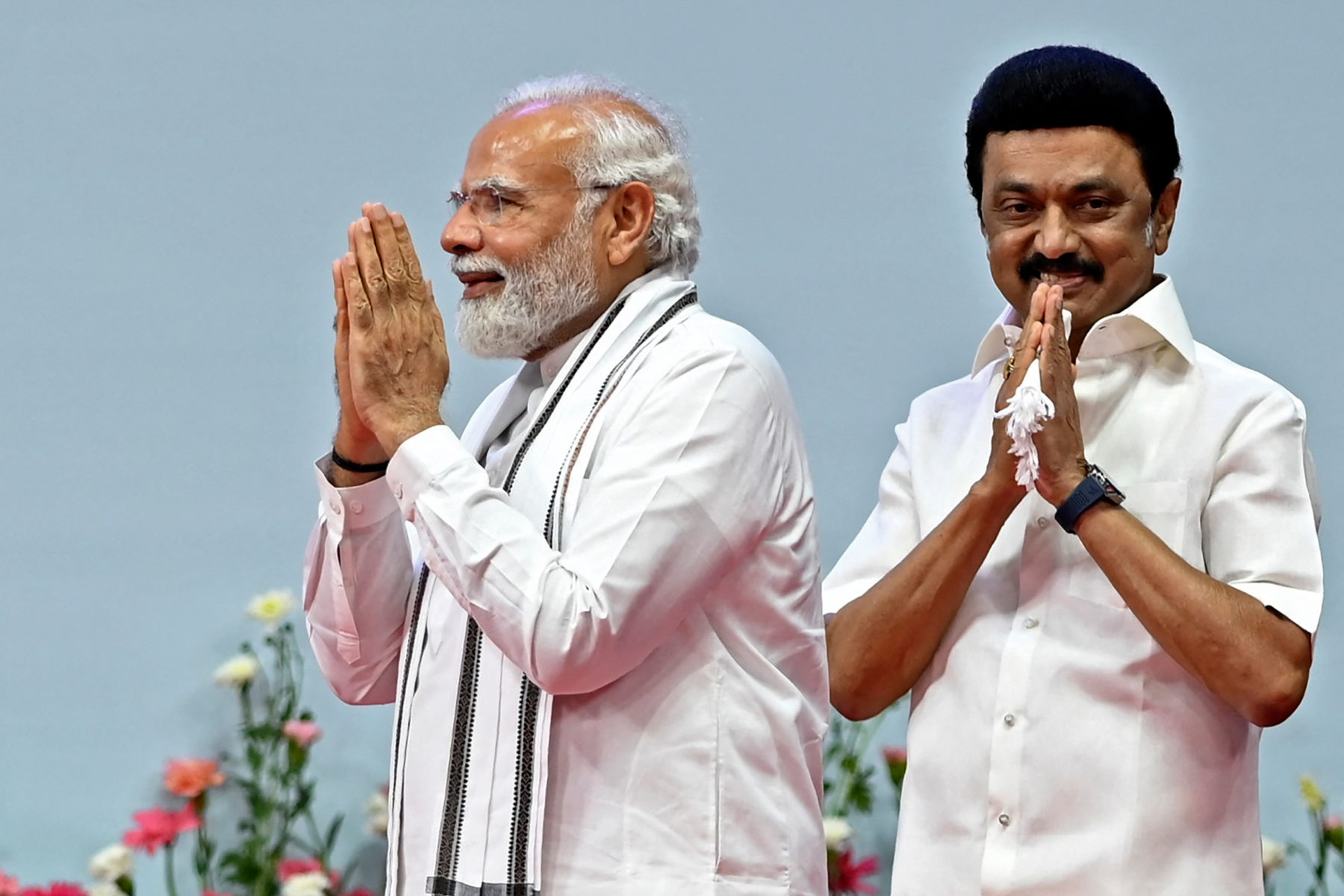
Photo: ARUN SANKAR/AFP via Getty Images.
While Hindi is by far the single most spoken language in India, there are hundreds of millions who do not speak it and who fear being at a disadvantage were learning Hindi to become compulsory. The rumors and fake videos tapped into the prejudices and resentments of both Hindi speakers and those in the south who speak entirely different languages and write with a different alphabet. The videos made national headlines because they appeared to expose yet another historical division still resonant in contemporary India.
S. Anandhi, a professor at the Madras Institute of Development Studies, told me that the politics of the BJP is inherently opposed to the federalism that has long characterized politics in Tamil Nadu. The BJP, she said, “is against autonomy, democratization of language, and plurality of culture and religion.”
The fomenting of social media outrage over the last couple of weeks provides an insight into what campaigning might look like over the next year as the general election approaches. The journalist Arun Sinha, author of “Battle for Bihar,” an inside look at the state’s politics, told me that the level of organization shown over the last few weeks, as fake videos were spread about anti-migrant violence in Tamil Nadu, suggests that the BJP wants to establish itself as the voice of the large population of disenfranchised Bihari migrant workers.
Spreading rumors about anti-migrant feelings in states like Tamil Nadu and maligning the non-BJP coalition government of Bihar as unresponsive, he said, “is like killing two birds with one stone.” And, as ever, the BJP’s tight control of the social media narrative in India helps it to advance its electoral goals. The question is whether the opposition can, as it tried to do in Tamil Nadu, effectively marshal social media to stop the spread of disinformation.
The story you just read is a small piece of a complex and an ever-changing storyline that Coda covers relentlessly and with singular focus. But we can’t do it without your help. Show your support for journalism that stays on the story by becoming a member today. Coda Story is a 501(c)3 U.S. non-profit. Your contribution to Coda Story is tax deductible.






